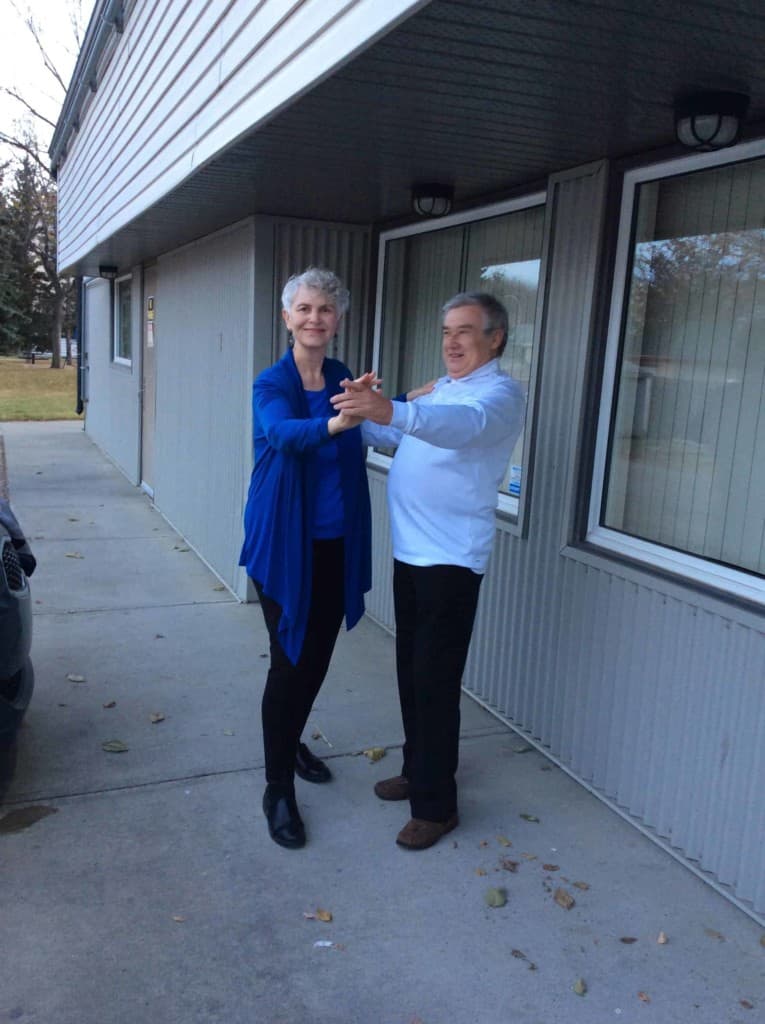Tango is a hot dance for a cold night
“Learn something new. It’s good for your brain.” I put this challenge to the test this fall by taking up Argentine tango.
Not that I knew much about tango. I hadn’t watched it on YouTube, didn’t know the music, didn’t have high-heeled shoes with slippery soles to glide along the dance floor.
On the plus side: my neighbourhood friend, Carmen-Lida Ordonez, recommended that I try tango. It’s good exercise and nearby at the Parkdale-Cromdale Community League hall. Classes are on Sunday nights. Great, not much to do on Sunday night at 6:30 anyway. It’s a drop-in class, and only five dollars. You can’t beat that.
The instructors, married couple Vince and Cindy Davis, are Edmontonians. He’s a professor at the University of Alberta; she’s retired. In 1995, they visited Argentina to take ballroom dance lessons. They soon learned that when in Argentina, tango is supreme. Within a day or two, they switched to tango classes.
Here they are, Sunday night, with a class of about 20. The group balances nicely with equal numbers of men and women.
I’m easily spotted as the one looking terrified.
While the more advanced students warm up by dancing in couples, Vince gestures to me to step forward for basic instructions. I place my left hand on Vince’s right shoulder. “Your left hand goes on my upper arm,” he tells me. I change position. “Your right hand must always be upright in mine. Exert a little pressure so that you can feel in which direction I’m leading you.”
This is my first hint that tango is all about connection. No free-form hippie dancing here. I’m out of luck.
Vince continues his instructions. I smile, look into his eyes, and blank out. My thoughts run along the lines of: “This is impossible. No idea what he’s talking about!”
After 15 minutes, it’s time for a group lesson. In tango, the men lead. The women follow. Both jobs require focus. Neither is easy.
Vince and Cindy show us tonight’s moves. Watching them glide around in each other’s arms, I understand why people stick with tango: it’s a hot dance for a cold night.

We start, dancing with the person of the opposite sex who is closest to us. Every 20 minutes or so, Vince instructs us to move to another partner.
My first partner is Bill, who took up tango about five months ago. Bill is tall, dressed in black, and looks like he knows what he’s doing. As I place my left hand on his right upper arm, I almost quit. My head is swimming. My feet hurt in high heels I haven’t worn for 20 years. Bill waits for the entrance beat on the music. We take four steps, with me moving backward, then two side steps. One of my side steps lands on his left foot.
“Relax. It’s okay,” Bill says reassuringly. “It really didn’t hurt.”
Four classes later, it’s now late October. My new Value Village dance shoes fit well. I can tango backward and sideways. I even know some “fancy” steps (my terminology) like the ocho, a complex movement similar to a figure eight.
I’m learning something new, and I’ve learned to embrace not being the best. I’m listening to tango CDs, watching tango videos, and I went to a tango music concert at the University of Alberta.
In my last class, I felt like I was finally dancing tango. It may only have been for two minutes, but I was gliding around the floor—just like they do it on YouTube.
TANGO CLASSES
Sundays, 6:30 pm
Parkdale-Cromdale Community League (11335 85 St)
$5 cash per class
Featured Image: Constance Brissenden and Slawomir Benluzanski practice tango steps outside the Parkdale-Cromdale Community League hall before the class starts.| Supplied







